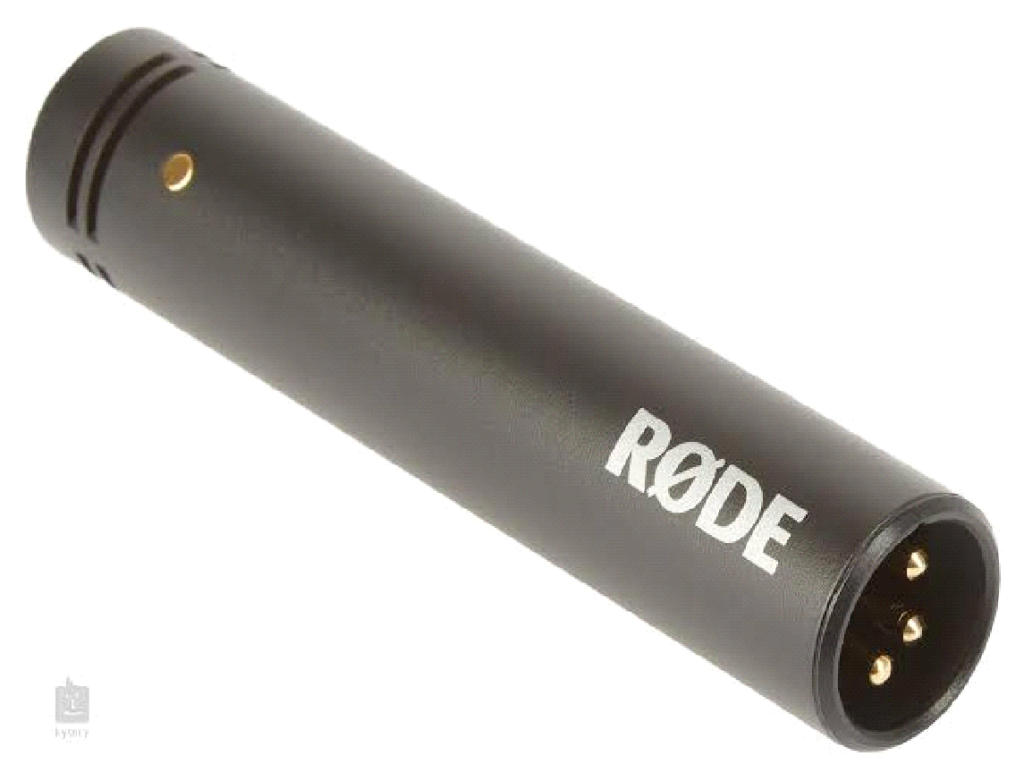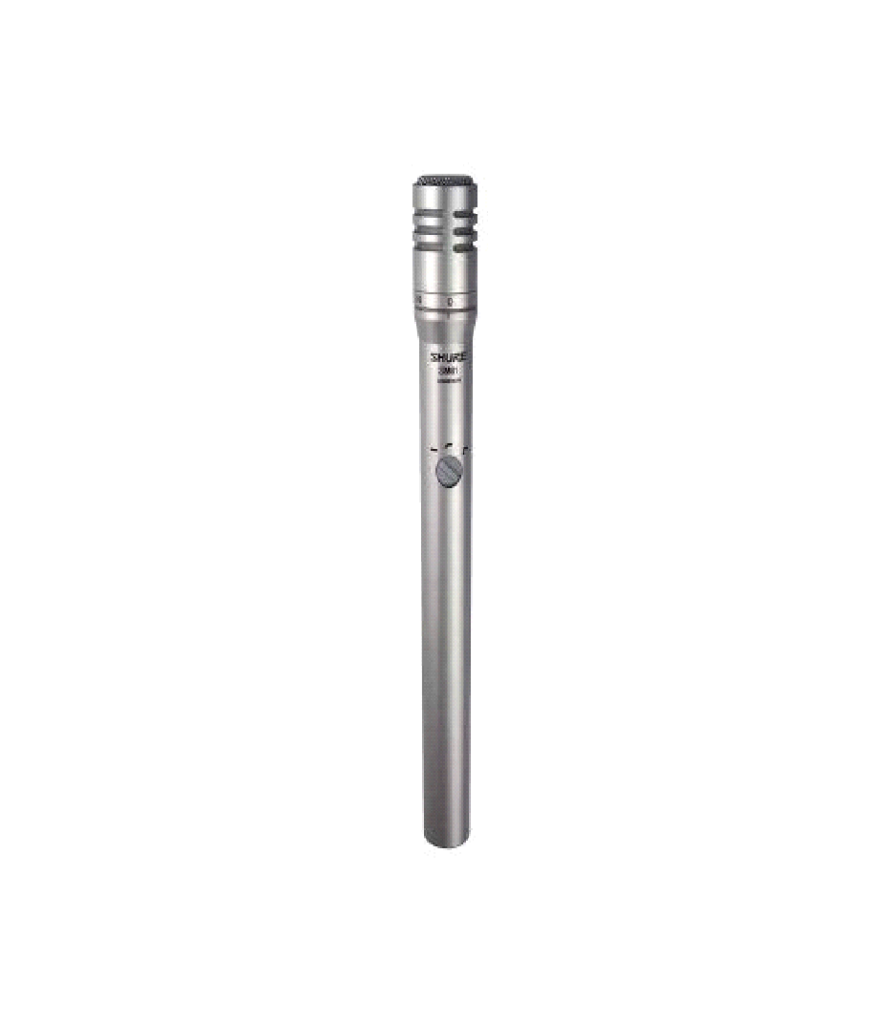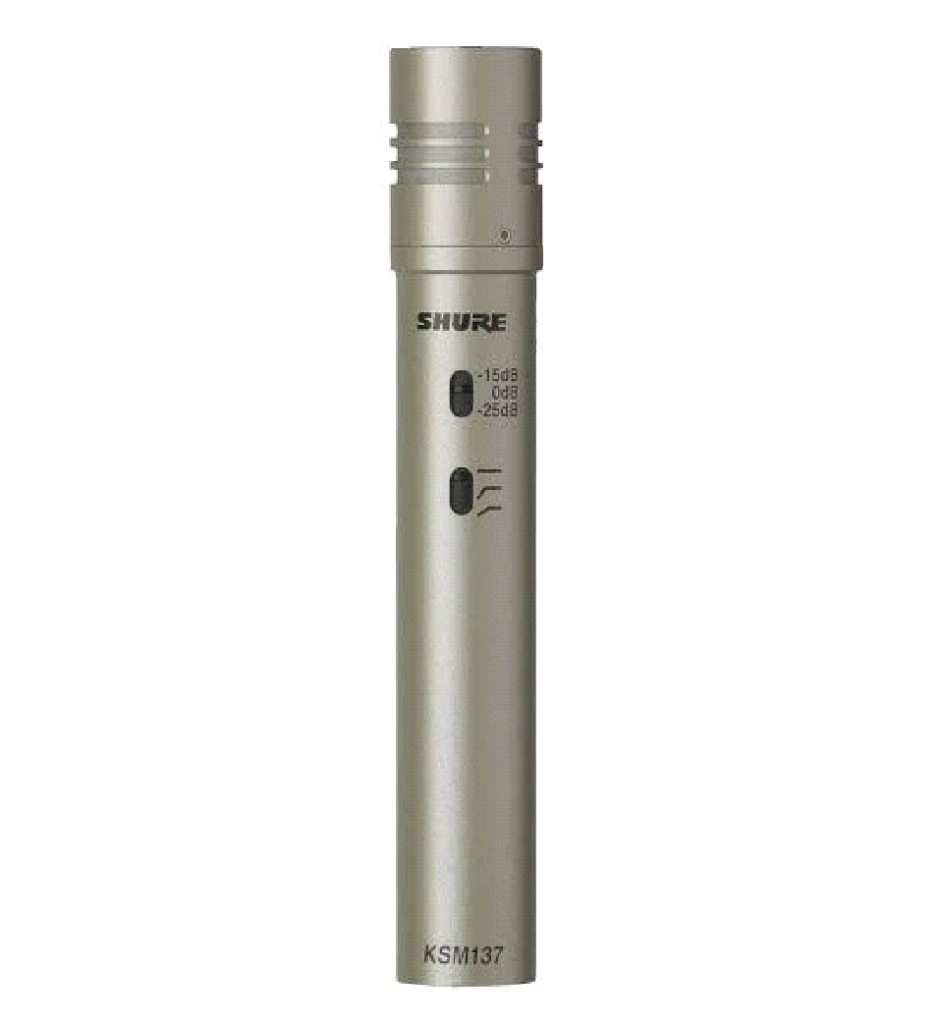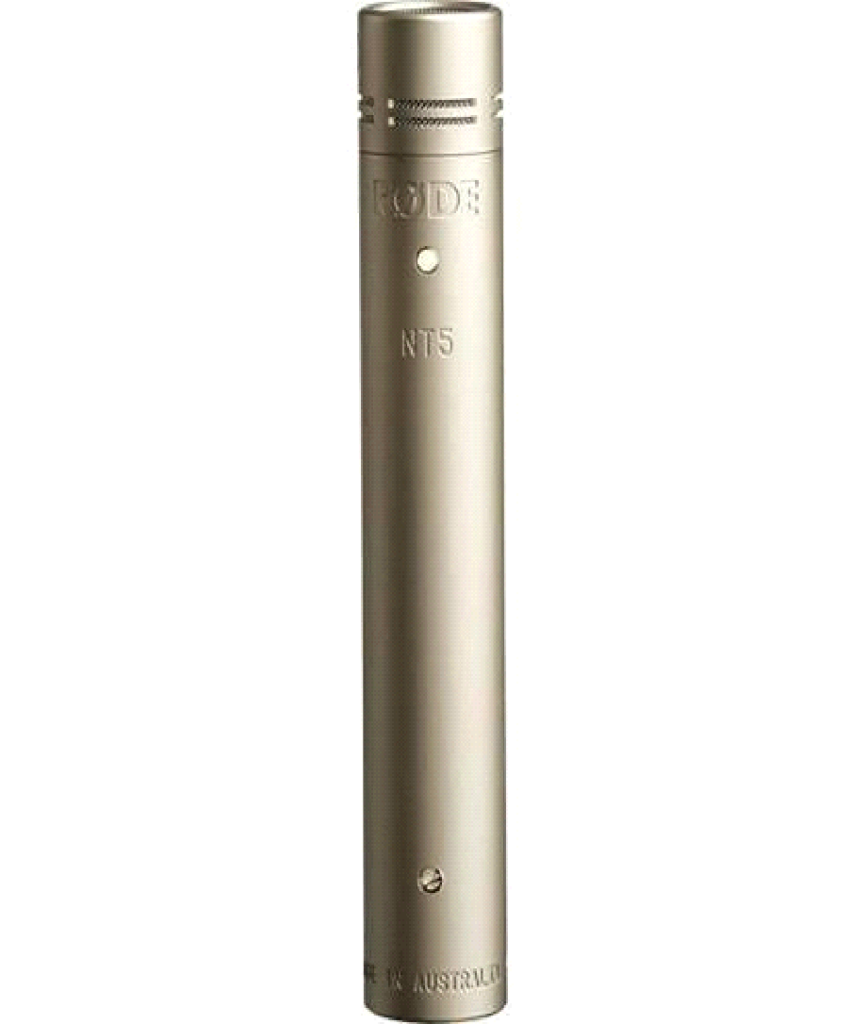They are designed to capture high-frequency sounds with great accuracy, efficiency, and detail, making them ideal for recording instruments such as acoustic guitars, pianos, cymbals, and percussion
They are also used for capturing ambient sounds in field recording applications
Small diaphragm condenser microphones have several advantages over other types of microphones, including their compact size, high sensitivity, and low noise levels. They are also known for their ability to capture the natural sound of the source material with a high degree of fidelity.
WHAT FEATURES SHOULD YOU LOOK FOR WHEN CHOOSING A SMALL DIAPHRAGM CONDENSER MICROPHONE?
COMPATIBILITY:
Small diaphragm condenser microphones are typically compatible with a wide range of audio equipment, including audio interfaces, mixers, and preamps that provide phantom power (+48V) and have an XLR or 1/4″ input.
Battery life:
Some small diaphragm condenser microphones do not have a battery compartment and require phantom power (+48V) to operate.
However, some small diaphragm condenser microphones do have a built-in battery for power. These microphones typically use a small battery, such as a AAA or 9V battery, and can provide anywhere from a few hours to several hundred hours of operation
Range:
The range of small diaphragm condenser microphones depends on the specific features of the microphone
Frequency response:
Small diaphragm condenser microphones are known for their accurate and flat frequency response.They are capable of capturing a wide range of frequencies with a high degree of accuracy and fidelity. However, they may have a slightly boosted or attenuated frequency response in certain frequency ranges
Here’s our list of the best 8 small diaphragm condenser microphones:
- Audio Technica at2020
- Rode M5
- Shure SM81
- Shure KSM137
- Rode nt5
- Akg P170
- Samson C02
- Hollyland Lark 150
1. AUDIO TECHNICA AT2020:

BRIEF INTRO AND SPECS: AUDIO-TECHNICA at2020 is a condenser microphone designed for home studio recording, podcasting, and other vocal applications. It features a cardioid polar pattern that helps to capture sound from the front while rejecting background noise from the sides and rear.
The microphone has a frequency response range of 20Hz to 20kHz. It also has a high SPL handling capability.
The AT2020 has a sturdy build quality and comes with a pivoting stand mount that allows for flexible positioning during recording sessions. It also has a standard 3-pin XLR connector.It is an affordable and reliable microphone that delivers clear and detailed sound quality
NAME, BRAND, AND PRICE: AT2020 is a microphone model made by Audio-Technica. The price of the AT2020 microphone ranges from $99 to $149.
PROS AND CONS:
Pros:
- It captures sound with high accuracy and clarity
- This microphone is versatile
- The AT2020 has a low self-noise level.
- This microphone is durable and long-lasting
- Affordable price for quality audio performance
CONS:
- It requires phantom power to operate
- Its sensitivity is high
- It has a cardioid polar pattern,
- It does not come with many accessories,
REVIEW STARS: 4.7 STARS
2. RODE M5:

BRIEF INTRO AND SPECS: The Rode M5 is a small diaphragm condenser microphone designed for studio and live recording applications.
The microphone has a frequency response range of 20Hz to 20kHz and a maximum sound pressure level of 140 dB. M5 requires 48V phantom power to operate and can be connected to a recording interface or mixer using an XLR cable.
The Rode M5 comes with a stand mount, windshield , and is known for its durability and high-quality sound reproduction.
NAME, BRAND, AND PRICE: The name of the microphone is Rode M5, and it is manufactured by Rode Microphones
Its price ranges around $199 for a pair.
PROS AND CONS :
Pros:
- The Rode M5 has a crisp, clear sound with excellent detail and clarity
- The microphone has a rugged metal construction, which makes it durable
- It is suitable for a wide range of recording applications.
- The Rode M5 is reasonably priced
Cons:
- The small size of the Rode M5 means that it can be sensitive to handling noise,
- The Rode M5 has a limited low-frequency response.
- The microphone requires 48V phantom power
REVIEW STARS: 4.7 STARS
3. SHURE SM81:

BRIEF INTRO AND SPECS: The Shure SM81 is a popular small diaphragm condenser microphone that is widely used for studio and live sound reinforcement applications. It features a cardioid polar pattern, which provides good isolation of the sound source and rejects sounds from the sides and rear.
The SM81 has a frequency response range of 20Hz to 20kHz, and it can handle high sound pressure levels of up to 136 dB. It also has a low self-noise level.
The microphone requires 48V phantom power to operate and can be connected to a recording interface or mixer using an XLR cable. It comes with a foam windscreen, a storage bag, and a mic clip
It is known for its durability and versatility and is often used for recording acoustic instruments
NAME, BRAND, AND PRICE: The name of the microphone is Shure SM81, and it is manufactured by Shure Incorporated
Shure SM81 typically retails for around $349
PROS AND CONS:
Pros:
- The SM81 is known for its detailed, transparent sound
- The microphone is durable and versatile
- The SM81 has a cardioid polar pattern
Cons:
- The SM81 is sensitive to handling noise
- The microphone requires 48V phantom power
- The SM81 is a relatively expensive microphone
REVIEW STARS: 5 STARS
4. SHURE KSM137:

BRIEF INTRO AND SPECS: Shure KSM137 is a small-diaphragm condenser microphone that is designed for studio and live sound applications. It features a cardioid polar pattern and a frequency response range of 20Hz to 20kHz
The KSM137 has a low self-noise level and a high sensitivity. It also has a switchable low-frequency filter.
The microphone requires 48V phantom power to operate and can be connected to a recording interface or mixer using an XLR cable. It comes with a microphone clip, a storage bag, and a windscreen, The Shure KSM137 is known for its durability and versatility NAME, BRAND, AND PRICE: The name of the microphone is Shure KSM137, and it is manufactured by Shure Incorporated
Shure KSM137 typically retails for around $399.
PROS AND CONS:
Pros:
- The KSM137 has a transparent, natural sound with excellent detail and clarit.
- It is durable and versatile.
- The KSM137 has a cardioid polar pattern
Cons:
- The KSM137 is sensitive to handling noise.
- The microphone requires 48V phantom power
- The KSM137 is a relatively expensive microphone
REVIEW STARS: 4.7 STARS
5. RODE NT5:

BRIEF INTRO AND SPECS: It is a small condenser microphone used for recording acoustic instruments such as guitars, drums, and percussion.
The Rode NT5 has a cardioid polar pattern and a frequency response range of 20Hz to 20kHz. It also has a maximum SPL of 143 dB. The microphone requires 48V phantom power to operate and can be connected to a recording interface or mixer using an XLR cable. It comes with a mic clip, a windshield, and a protective carry case
The Rode NT5 is known for its high-quality sound reproduction and durability
NAME, BRAND, AND PRICE: The name of the microphone is Rode NT5, and it is manufactured by Rode Microphones
Rode NT5 typically retails for around $399 for a pair of microphones
PROS AND CONS:
PROS:
- The Rode NT5 has a transparent, clear sound with excellent detail and accuracy
- It is durable and versatile
- The Rode NT5 is reasonably priced
Cons:
- The small size of the Rode NT5 means that it can be sensitive to handling noise
- Rode NT5 has a limited low-frequency response
- The microphone requires 48V phantom power
REVIEW STAR: 5 STARS
6. AKG P170:

BRIEF INTRO AND SPECS: The AKG P170 is a small-diaphragm condenser microphone designed for recording acoustic instruments, drums, and percussion. It features a cardioid polar pattern. The microphone has a frequency response range of 20Hz to 20kHz
The P170 has a rugged all-metal body, which makes it durable
AKG P170 is a versatile and reliable microphone that is well-suited for recording acoustic instruments, drums, and percussion
NAME, BRAND, AND PRICE:
The name of the microphone is AKG P170, and it is made by AKG
AKG P170 is priced at around $100 to $150.
PROS AND CONS:
Pros:
- It is versatile
- This microphone delivers a clear and accurate sound
- The P170 has a rugged metal body, making it durable
- The AKG P170 is an affordable option .
Cons:
- It is sensitive to handling noise
- It requires 48V phantom power
- It gives low output
REVIEW STARS: 4.3 STARS
7. Samson C02:

BRIEF INTRO AND SPECS:
The Samson C02 is a pair of small-diaphragm condenser microphones that are designed for studio and live recording applications.
The C02 microphones have a cardioid polar pattern. They have a frequency response range of 40Hz to 18kHz.
The C02 microphones have a durable metal construction and come with a foam-lined carrying case for easy transport and storage. They also feature a switchable -10dB pad
Samson C02 is a reliable and affordable option for those looking for a pair of small-diaphragm condenser microphones
NAME, BRAND, AND PRICE:
The name of the microphone is Samson C02, and it is made by Samson Technologies, Samson C02 Stereo Pair is priced at around $80 to $100.
PROS AND CONS:
Pros:
- The Samson C02 is an affordable option
- These microphones are suitable for recording more.
- The C02 microphones deliver a clear and accurate sound
- The microphones have a durable metal constructio
Cons:
- Samson C02 can be sensitive to handling noise
- The C02 microphones have a casensitivity compared to some other condenser microphones
- The Samson C02 microphones require 48V phantom power.
- The microphones have a relatively low sensitivity
REVIEW STARS: 4.5 STARS
8. HOLLYLAND LARK 150:
BRIEF INTRO AND SPECS: Despite not being a complete condenser mic, the Hollyland Lark 150 is known for its amazing wireless microphone capabilities. Its effectiveness lies in its strength to abridge the main qualities usually linked with condenser microphones, making it an indispensable and adaptable tool for audio engineers, vocalists, and musicians. One of its star abilities is the portability factor, allowing users to move freely without being tied up by the cables. This trait is specifically advantageous for videographers, vloggers, and content creators who need a little stretch in their audio recording setups.
Moreover, the Hollyland Lark 150 has a great frequency response that is useful for recording a broad range of tones with cleanliness. This feature improves the audio quality, making it valuable for different applications, from recording ambient sounds to delicate vocals. The mic’s solid design, backed by strong performance, makes this device a reliable option for both amateurs and professionals.
Besides, the Lark 150 comes with the latest wireless technology, making sure you get an interference-free, stable connection. This reliability factor is necessary for users who require high-quality and consistent audio in distinct environments. Fundamentally, the Lark 150 exceeds its category by equipping far more than the needed qualities of a condenser mic. Therefore, you can expect high portability, outstanding frequency response, and amazing audio quality. A few more amazing characteristics of the Hollyland Lark 150 are noise-canceling design, high compatibility, auto scanning, and pairing.
NAME, BRAND, AND PRICE: Lark 150 is a wireless microphone manufactured by Hollyland. It is priced at $199 on Amazon.
PROS AND CONS:
Pros:
- This microphone automatically turns on and pairs with the receiver
- The controls are extremely user-friendly and without complicated options
- You can expect impressive sound quality in both indoor and outdoor environments
Cons:
- This is not a typical small diaphragm condenser mic but has similar qualities
REVIEW STARS: 4.4 STARS
WHY SMALL CONDENSER MICROPHONES ARE BETTER THAN LARGE CONDENSER MICROPHONES?
There are a few reasons why small condenser microphones are preferred over large condenser diaphragm microphones in certain situations:
Size and Portability: Small condenser microphones are often more compact and lightweight than their large diaphragm counterparts, making them easier to transport and set up.
Reduced Sensitivity to Handling Noise: Small condenser microphones typically have a more robust design than large diaphragm microphones, which can be quite delicate.
Better High-Frequency Response: Small condenser microphones tend to have a more extended high-frequency response than large diaphragm microphones, which can result in a brighter, more detailed sound.
CONCLUSION:
Small diaphragm condenser microphones are a versatile and effective option for a variety of recording applications, particularly for capturing high-frequency detail and intricate sound sources.
While small diaphragm condenser microphones offer precision and quality for studio settings, capturing crystal-clear audio in fast-moving or outdoor situations can be challenging. To complement your setup in on-the-go scenarios, consider adding a reliable wireless lavalier microphone – ideal for capturing dialogue and interviews with impressive clarity and convenience.
FAQ:
What is a small diaphragm condenser microphone?
A small diaphragm condenser microphone is a type of microphone that uses a small diaphragm to capture sound. They are typically used for recording acoustic instruments, vocals, and drums.
How does a small diaphragm condenser microphone work?
A small diaphragm condenser microphone works by using a capacitor to convert sound waves into an electrical signal. The diaphragm of the microphone vibrates in response to sound waves, which causes a change in capacitance. This change in capacitance is then converted into an electrical signal.
What are the benefits of using a small diaphragm condenser microphone?
Small diaphragm condenser microphones are known for their ability to capture detailed, accurate sound with a fast transient response. They are also relatively affordable· ]
What are the drawbacks of using a small diaphragm condenser microphone?
Small diaphragm condenser microphones may not be as suitable for recording low-frequency instruments. Some models may be sensitive to handling noise and require careful positioning to avoid unwanted noise.
What types of instruments are best suited for recording with a small diaphragm condenser microphone?
Small diaphragm condenser microphones are well-suited for recording acoustic instruments
Can small diaphragm condenser microphones be used for recording vocals?
Yes, small diaphragm condenser microphones can be used for recording vocals.
What factors should I consider when choosing a small diaphragm condenser microphone?
- Frequency responce
- sensitivity
- directional pattern
- build quality.

































.png)







